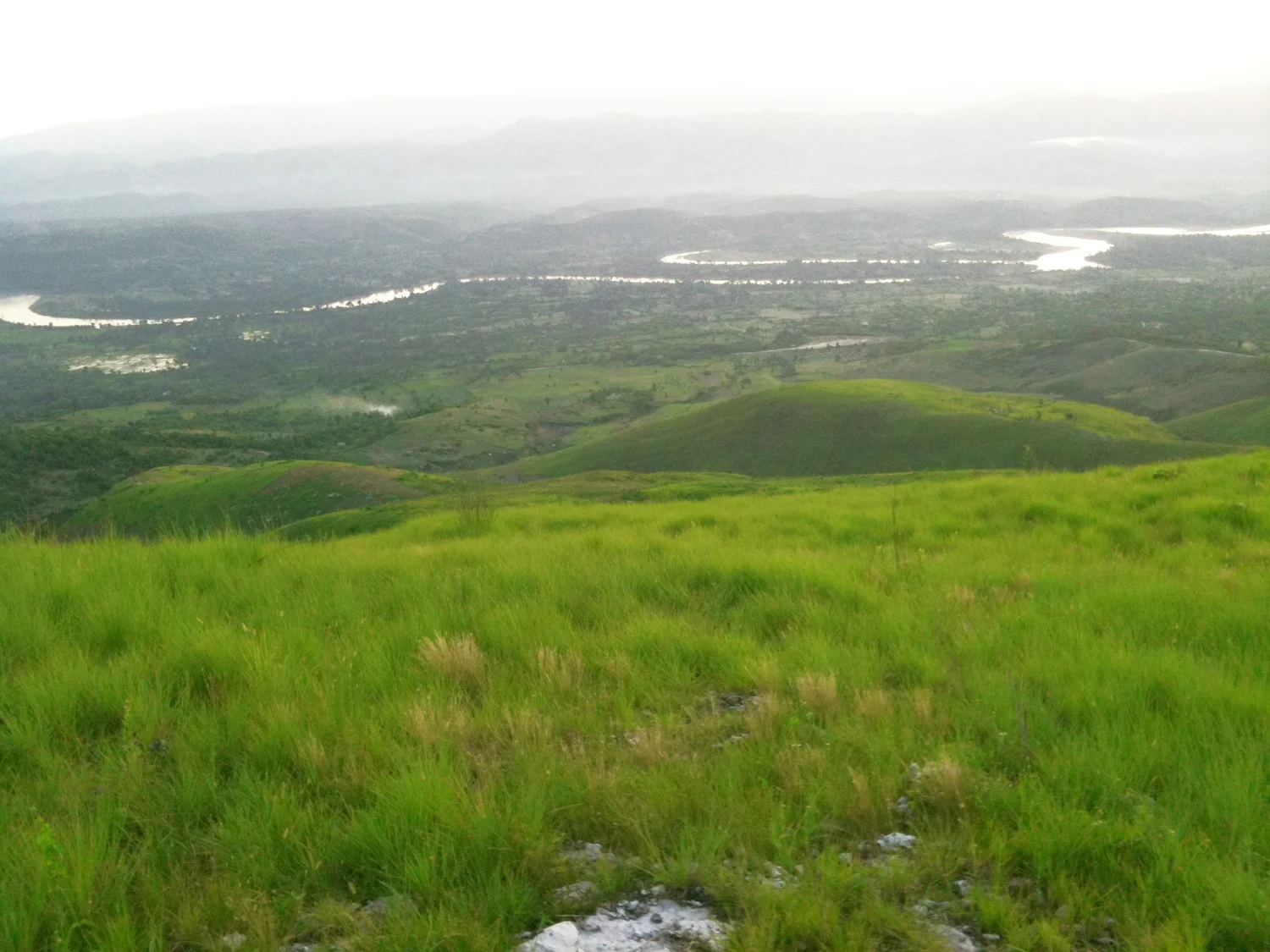ABOUT HTRIP
HTRIP is a response to the severe poverty in the mountains surrounding the Artibonite. Informal networks of farmers have allowed HTRIP workers to understand the practices and systems of mountain farmers they have developed over time. Through this network, HTRIP has been able to identify communities of farmers who have some of the greatest needs, and the greatest desire to learn better practices.
By far the lack of water and topsoil are the two biggest problems they face. HTRIP has 3 major approaches to battling this harsh condition.
• Building rock walls to lessen topsoil erosion while collecting soil, which otherwise would flow down into the coastal alluvial plains.
• Building water basins, which can collect rain water to extend the rain season, establishing greater access to water for people, and providing irrigation during dry spells.
• Reintroducing timber to the mountainsides, some for timber, some fruit bearing, and some for ecologic reasons such as nitrogen fixing trees and addressing the relatively low ratio of organic material to lithic material In the soil due to desertification.
HTRIP has developed an educational approach to battling the harsh conditions of the mountain region. HTRIP workers and educators select communities to participate in a 9-month education program.
Farmers learn hands-on approaches to the proper procedures for planting, nurturing, and using trees. Each farmer works on their own land with others in the community and they rotate from one farmer’s land to the other. During the 9-month program each farmer goes through the step-by-step process from small seed to a growing tree.
They learn best practices for introducing trees into their already functioning farms. Fruit bearing trees provide shade and food to sell or eat after just a few years. Timber trees can be cut after 7-10 years and sold for $500-1,000 as timber. Other trees provide soil nutrients, and they all slow soil erosion. HTRIP goes beyond just putting trees in the ground, it develops long-term relationships with communities of farmers to increase productivity and thus improve the quality of their lives.
Introducing trees is both challenging and rewarding. Not all trees can survive the harsh environment of little soil nutrients, little water, and goats that feed off the sapling trees. The HTRIP technicians conduct an annual evaluation of each plot to measure the growth of the trees, or to replace trees, which may have died for any of the above-mentioned reasons.
Most farmers rely on little more than a few dozen pounds of corn a year. Most of the practices of cultivating trees in the mountains has been lost or forgotten. HTRIP remediates that by providing free education, seedlings, and community engagement.
The HTRIP program is conducted in the communities by experienced agricultural technicians. These technicians assist the farmers to establish the tree plots by creating contour trenches to retain water and soil, and to prepare the land for planting seedlings, which have been grown in community nurseries.
The objective of HTRIP is to demonstrate that commercially valuable timber species can be grown successfully in eroded areas while providing important habitat for beneficial native species, and to increase reforestation through outreach, training, and technical assistance.
Strategic reforestation will also increase topsoil recovery and water infiltration, and thus reduce the frequency and severity of flooding. The overall impacts of this project are improved agricultural output (food and timber) and income for the participants, improved environmental conditions, and increased habitat for many avian and wildlife species.
SITES
Since its inception, HTRIP has grown rapidly. The vast network of mountain farmers has spread the word from household to household about the successes of the projects. The first year, in 2006, HTRIP worked with 9 communities.
By 2020, HTRIP has engaged 73 communities and successfully planted 3 Million trees. Now in its 16th year some of the trees planted in the first year are reaching full maturity. Farmers in these communities have adopted new farming practices yielding higher volume and some higher value crops, such as vitamin-rich vegetables.
HTRIP technicians apply many considerations when selecting sites. These include the needs of the community, the level of ecological degradation, the proximity of other HTRIP sites, and the enthusiasm of the farmers to participate.
HTRIP technicians frequently hear interest from neighboring communities to participate while they are in the field. Through this informal community networking new communities are identified and vetted for HTRIP engagement.
Logistically it can be very challenging to travel up the hillsides with a vehicle. The roads barely exist and are made by hand with no paving. The harsh weather conditions rapidly erode the roads as fast as the hillsides. HTRIP vehicles have to trek up steep mountainsides to bring supplies, seedlings, and educational programming. One reality is that the harder the community is to reach, the greater the need.
In 2015 Haiti Friends, through its largest program HTRIP will plant more than 400,000 trees and reach the 2-million tree milestone. Below is a list of the mix of seedlings being prepared for the 2015 planting season.







